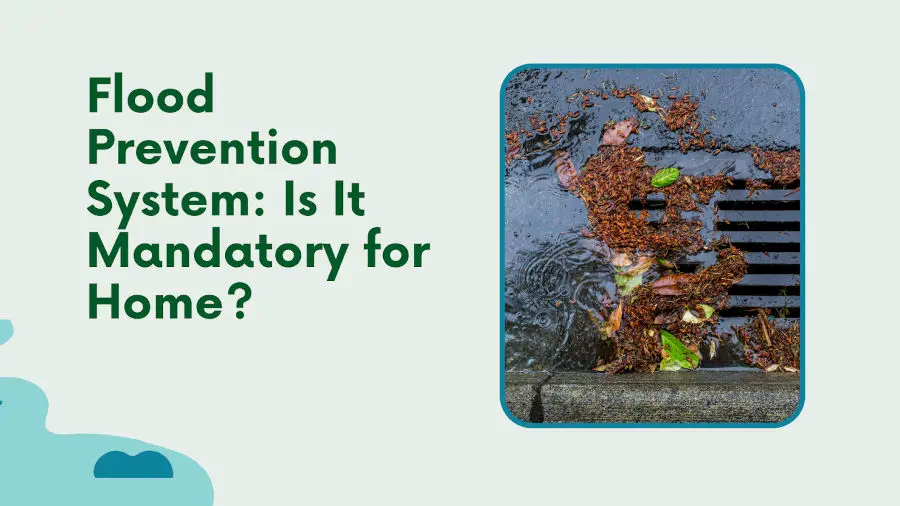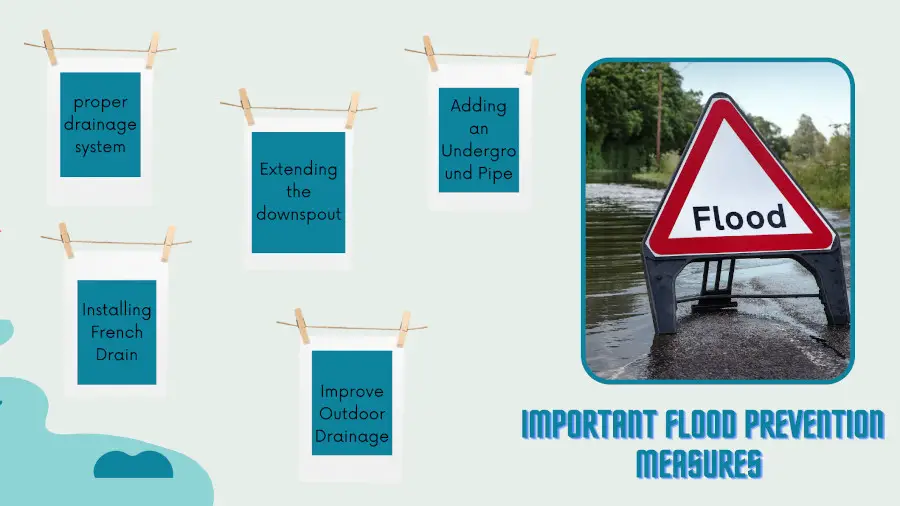
Are You Based Near A Flood Prevention System
Have you ever thought of the level of flooding risk in your home? Based on the Federal Emergency Management Agency (FEMA), all the 50 states in the U.S have experienced some degree of flooding within the past 5 years.

You need to understand that natural disasters and flash floods are not the only elements that can cause your home to flood. Other unexpected household issues such as broken water main, leaky pipes, and appliance malfunctions can lead to floods.
But, even amidst all these uncertainties, there’s hope. You can do things to prevent flooding and minimize the risk of flood-related damages in your home.
Safeguarding your home is mandatory now, more than ever before. Floods are now more common and severe due to climate change.
Now, what’s the flood prevention system that you can employ in your home and ensure you’re well prepared for the worst? We’ll find out below. But, first, what’s it about floods and climate change?
What You Should Know About Floods and Climate Change
Think about it this way; what happens when you heat water in a pan? Once warm, it starts bubbling (more energy produced) and steaming out (increased moisture in the air).
Climate change is also stirred by burning coal, gas, and oil. This means that today’s weather occurs in a warmer, wetter, and more energetic atmosphere.
According to the climate council, climate change affects how water moves around our planet. This is equal to the water cycle. The basic implication here is that; wet areas seem to get wetter while dry areas are getting even drier.
The rains we are experiencing now are in the form of intense downpours. This kind leads to a greater risk of floods. Warmer atmospheres tend to hold more moisture. Every degree of warming can have the atmosphere holding around 7% more moisture.
Increased moisture implies that rain falls frequently but in brief, intense downpours. This form of rainfall can increase flash flooding risks. This means that every home must take flood prevention measures.
What Are the Important Flood Prevention Measures Available?

Drainage Systems to Mitigate Flood Losses
Proper drainage is essential if you’re to curb flooding in your yard. The truth is that; the effects of flooding can be catastrophic. As a victim, you may end up with unexpectedly huge financial burdens. Such situations may follow issues like major storm events that may cause structural damage.
But, a well-designed drainage system to prevent floods allows the effective discharge of stormwater. This leads to reduced property losses and time spent on recovery.
An effective drainage system can self-clean to ensure the wastewater flows freely through the system to the sewer. You can attain this by ensuring the wastewater travels with adequate speed through the pipework. Both gradient and pipe diameter determine the speed.
A small diameter drain will give the pipe a greater depth of water. This results in a greater water flow velocity.
Methods to Improve Your Outdoor Drainage
It’s necessary to note that the low points on your property can cause standing water that ultimately leads to flooding. What happens next is damage to your pipes and sewer system.
Some popular methods to improve your outdoor drainage system include:
Extending the downspout
You may wonder how important downspouts are to prevent flooding. Well, they help to enhance your outdoor drainage system. You need to extend your downspout’s length. It usually comes down from the roof and dumps out inches from the property.
When you redirect the water flow from low-lying areas, you can redirect the water accumulation to an area with good efficient drainage.
Adding an Underground Pipe
Adding an underground pipe may come in handy. An underground drainage system involves digging a downward sloping trench. You then connect a buried PVC pipe to a catch basin, which works to collect water. This is a straightforward technique to channel water away from your property.
Installing French Drain
The French drain systems work such that they use piping that contains perforations. They allow water collection and dispersion throughout the soil on your property. The best thing is that; they don’t need an outlet.
What Are the Benefits of a Drainage System on Your Property?
Drainage systems are an essential part of landscape design. But, people tend to overlook this crucial element. They entail piping buried beneath your yard. The system helps divert water away from your landscape and into a different area.
The water is redirected to a place where it won’t cause damage, such as the streets. Please note that your yard may require a more powerful drainage system than others. But, this will depend on how many problem areas are available on your property.
Some drainage systems will use a sump pump, while others may use gravity to redirect the water. Below are some benefits of including a drainage system on your property.
Helps to Prevent Soil Erosion
Drainage systems are significant in preventing soil erosion. During the rains, the soil may be displaced from your landscaping to other areas of your property. This is known as soil erosion. As the process continues and with no proper drainage, the displacement can result in issues with soil depth. Such can damage your landscaping.
Enables the Prevention of Standing Water
Think about instances of standing water in your yard. It not only forms risky and slippery surfaces but may also drown your landscaping. More so, standing water can be too displeasing and, worst of all, attract irritating and illness-causing mosquitoes. But, when installing a drainage system, you’re sure to escape such menaces.
Prevents Water Damage
Improper drainage will cause flooding and also damage your landscaping. Going further, your home’s foundation may end up damaged. When you experience a severe storm, water tends to flow through your yard much faster.
Without good drainage, the fast-moving water can force its way through the cracks in your foundation. This may not only cause damage to your house’s foundation. But, it can also cause problems in your basement.
Also, note that flooding water getting into your basement can cause life hazards when in contact with electrical appliances. So, how can you ensure that you prevent electrical-appliance-related damages during flooding?
How to Save Electrical Appliances During Flooding
A flood can lead to extensive damage. Such can even cause life-threatening situations for homeowners through instances like:
- Breaching of refrigerant lines
- Electrical systems can be compromised
- Internal components can experience corrosion hence damages.
All the above instances are risky for humans. But, some electricity precautions can help prevent such-like risks. An important precaution includes using a circuit breaker. It helps such that; as soon as any appliance gets faulty due to flooding the breaker can break the electrical connection.
Such circuit protection appliances are formulated to automatically restrain or shut off the electricity flow in case of overload, ground fault, or short circuits in the wiring lines. The circuit breakers or fuses prevent the overheating of the wiring and components. Usually, in scenarios like flooding, water interaction with the electrical wires can cause fire hazards.
Thus, many people have installed heating and cooling systems in their basements or lower levels. Changing the equipment location to a higher position can make a great difference. Due to the high position, the mini-split air conditioners and heat pumps can hardly get affected by floods.
Usually, you can have the equipment installed in the attic and, or the upper level. This would also allow you to compare with other technologies in the market and maybe go for something more efficient.
Ductless heating and air systems are a great investment. They don’t need ductwork, and they take up less space. Besides, their installation work tends to be very easy. You can have the outdoor units positioned on the side of your house above flood waters.
Since you don’t have the option of relocating the equipment, you can consider hiring a skilled contractor to construct a flood wall heater around your air conditioner and furnace. This will help safeguard the appliances from water.
The self-contained, compact wall heater is often mounted permanently in or on the wall, It’s vented directly through the wall. As a result, it helps produce warmth and circulate air by burning fuel, or via electricity. Most importantly, in case of flooding, you won’t fear the possibility of damages or hazards caused by flood waters getting in contact with electric appliances.
Key Takeaways
When it comes to flooding, you’d rather be safe than sorry. Prevention is the best way to safeguard your life and save you from the heartaches of terrible home damage.
Every home or property can benefit from installing appropriate drainage systems to prevent flooding. The best thing is that; most of these flood prevention systems are cost-effective and quick to install. You only need to seek appropriate help to install the systems professionally.
With the timely solutions available, the flooding issue shouldn’t be a bother on your property. Once you have the right installations in place, you don’t have to worry about the possibility of experiencing harm in your home.
The discussion in our article above should give you the right guidance to minimize the risk of flood-related damages in your home.
.
